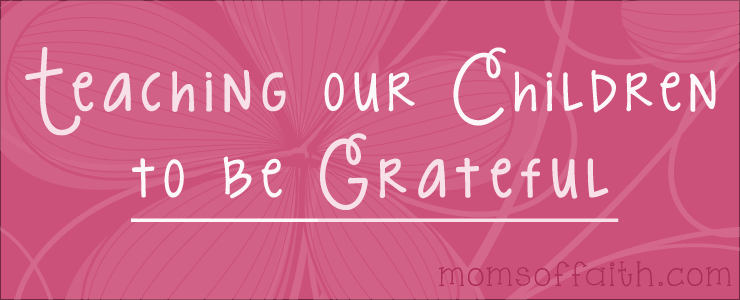Teaching our Children to be Grateful
This weekend I went with my senior son on a backpacking trip in the Grand Canyon for three days. It was a wonderful to spend some quality time together, and to create an experience with him that we will both always remember. I was grateful that the death of my husband gave me that opportunity. Sometimes it is hard to be grateful when we are in difficult or trying circumstances. I very easily could have used my son’s graduation as a time for me to look for all of the things that we don’t have because dad is gone. I can’t say that those thoughts have not entered my mind, but I know that when thoughts enter I have a choice to discard them or to dwell on them. I can choose to replace my “why me?” thoughts with thoughts of gratitude. I don’t have to be thankful for everything that is wrong, but I can choose to have an attitude of gratitude despite my circumstances. I can look for things to be grateful for.
Being grateful can help us individually to find happiness and joy when it seems that all is lost. Gratitude can help us dispel feelings of despair, bitterness, and hopelessness. Gratitude can make life sweeter and can make joyful moments and experiences more apparent to us. When we refuse to be grateful, we miss out on seeing the very blessings that would lift us. I love this quote by one of my favorite speakers,
“Those who set aside the bottle of bitterness and lift instead the goblet of gratitude can find a purifying drink of healing, peace and understanding.” –Deiter F. Uchdorf
If gratitude is such a powerful principle that can bring healing, peace and understanding into our lives, then it must be an important principle to teach to our children to be grateful.
How do we teach our children to be grateful?
The best way to teach any principle is by personal example. We need to be grateful ourselves, and we need to verbalize our gratitude. We do this by expressing thanks to members in our family and for blessings we receive. However, we also need to find ways to express our gratitude openly for things that are difficult. As our children see this example, it will cause them to alter their perspective as well.
We also need to teach our children how to ‘choose’ to be grateful. It’s teaching our children to look at the glass as ‘half full’ instead of ‘half empty.’ As a parent, if we recognize a negative comment made by a child as a potential teaching moment, we can guide them to think of a way that situation or thing could be a blessing. Instead of getting upset at them for a bad attitude, we can make a game out of looking for things to be grateful for. Another way to teach this is to have family members at dinnertime share something they are grateful for that happened that day. Keep a family gratitude journal of the responses. Encourage your children to keep a personal gratitude journal and to write one thing every night after their personal prayers.
Another way to cultivate gratitude is to give children opportunities to serve and help others who are less fortunate than they are. We live in a society that values the acquisition of things. Often children base their worth and happiness on these things. Pulling our families away from materialism and towards service can help them be more grateful for their own blessings. Sometimes this requires us to not over indulge our children or ourselves. Children will be more grateful for things they have had to work for than for things that are just freely given them.
Cultivating an attitude of gratitude in your home will make your relationships with each other more peaceful. Family member will feel more appreciated and have greater love for each other. They will feel more content with what they have.
How do you teach your children to be grateful?
Copyright © Veronica Clarke, Moms of Faith®, All Rights Reserved

